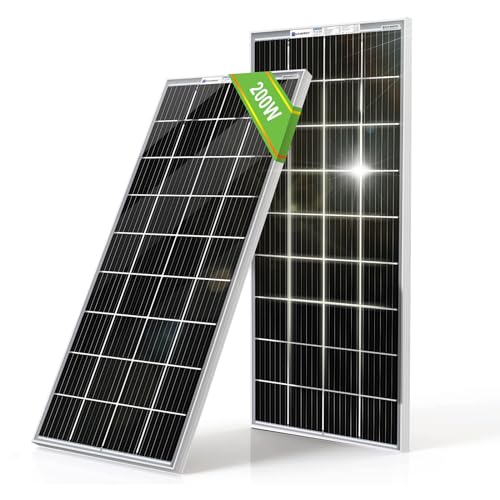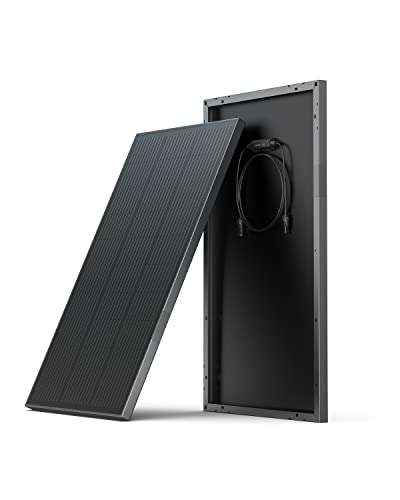Monocrystalline solar panels are some of the most popular options when it comes to the Types Of Solar Panels. Made from a single crystal structure, these panels offer high efficiency and a sleek black appearance. They are perfect for homeowners looking to maximize their energy production in a limited space.
One of the main benefits of monocrystalline panels is their impressive efficiency rate. Typically, they convert more sunlight into electricity compared to other panel types. If you’re dealing with a smaller roof, this can make a big difference. Plus, they perform better in low-light conditions, so you can still get good energy output on cloudy days.
Durability is another highlight. Monocrystalline panels are designed to last, often coming with 25-year warranties. They handle temperature fluctuations well, which means they can withstand tough weather conditions. This long lifespan can lead to significant savings over time as you’ll need fewer replacements.
The only downside? They tend to be pricier than other options, like polycrystalline panels. But if you’re all about efficiency and a long-lasting solution, they’re worth considering. If you're planning to invest in solar, monocrystalline panels should definitely be on your list of the Types Of Solar Panels to explore.
Polycrystalline Solar Panels Overview
Polycrystalline solar panels are a popular choice for those looking to harness solar energy. Made from multiple silicon crystals melted together, they have a distinct bluish hue and a unique look. If you’re considering going solar, understanding the different types of solar panels can help you make the best decision for your needs.
One of the standout features of polycrystalline panels is their price. They typically come at a lower cost compared to their monocrystalline counterparts. If you’re on a budget and want to save some cash while still enjoying solar benefits, polycrystalline panels are definitely worth a look. They provide solid performance and can be a great option for homeowners and businesses alike.
These panels are also known for their durability. They can withstand harsh weather conditions, like hail and heavy rain. Plus, they're generally more tolerant to high temperatures, making them a reliable choice in warmer climates. However, be aware that they might be slightly less efficient than monocrystalline panels, especially in low-light situations.
When it comes to installation, polycrystalline solar panels are pretty straightforward. They can fit onto rooftops or ground mounts without much hassle. Just keep in mind that you'll need a bit more space for the same energy output compared to monocrystalline panels.
100W Monocrystalline Solar Panel for Off-Grid Use
Harness the power of the sun for efficient energy solutions in remote locations
Product information
$114.99 $67.99
Product Review Score
4.38 out of 5 stars
156 reviewsProduct links
Thin-Film Solar Panels Basics
Thin-film solar panels are one of the exciting types of solar panels you might come across. They’re known for their lightweight and flexible design, making them super easy to install. Unlike traditional panels that need a sturdy roof, thin-film panels can fit in places that might not work for the bulkier options.
The production process for thin-film panels involves layers of photovoltaic material laid on a substrate. This can be glass, plastic, or even metal. The cool part? They can be manufactured in various shapes and sizes, fitting unique spaces perfectly. Plus, these panels perform well in low-light conditions, so they can still generate power when skies are overcast.
However, it’s good to know that thin-film panels typically have a lower efficiency rating compared to some other types of solar panels, like monocrystalline ones. This means they require more space to produce the same amount of power. Still, they can be a great choice if you have an expansive area or if you want a more flexible installation option.
Another perk of thin-film solar panels is their durability. They often resist shading and are less affected by high temperatures, so they can last a long time without much maintenance. If you’re shopping around and looking for the best fit, definitely consider the unique advantages that thin-film panels can bring to your solar energy setup.
ECO-WORTHY 100W Bifacial Monocrystalline Solar Panels
Maximize your energy output with these efficient and versatile solar panels that harness sunlight from both sides
Product information
$154.99 $136.99
Product Review Score
4.28 out of 5 stars
179 reviewsProduct links
Bifacial Solar Panels Key Features
Bifacial solar panels are becoming really popular, and it's easy to see why. These panels can capture sunlight from both sides, which means they can generate more energy than traditional single-faced panels. If you're looking at different Types Of Solar Panels, bifacial models are worth considering for their unique advantages.
One of the standout features of bifacial panels is their durability. Made to withstand the elements, they’re usually built tough, so they last longer and can handle harsh weather. Plus, many come with long warranties, giving you peace of mind about your investment.
Another great thing about these panels is their efficiency. Since they use sunlight reflected off surfaces like the ground or nearby structures, they can produce extra power. This means you get more bang for your buck, especially if you're in an area with a lot of sunlight.
Bifacial panels are also flexible when it comes to installation. You can mount them on rooftops or on the ground, and they look sleek no matter where they go. Their modern design means they can blend in nicely with any setting.
If you’re checking out the various Types Of Solar Panels, remember to consider bifacial options. They offer efficiency, durability, and versatility that can really make a difference in your solar energy experience.





